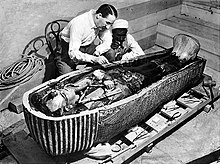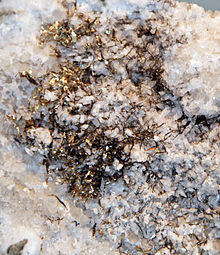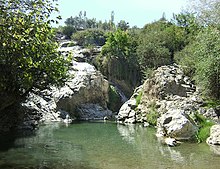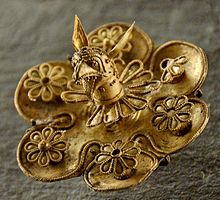Harvard Entertainment complete
The slab stele of Wepemnefret from his West Field tomb in Giza, G 1201. Framed in white are the name of the lioness goddess Mehit at the top, and two offerings below to the right, "red beer" dšrt, and "milk", jtrt, each one thousand cups. Mehit together with the bent rod is also mentioned in the rightmost column together with the patron goddess of archives and libraries Seshat whose name is written here with her emblem Gardiner R20. Image courtesy of the Phoebe A. Hearst Museum of Anthropology and the Regents of the University of California-catalog 6-19825.
Egyptology

Egyptology (from Egypt and Greek -λογία, -logia; Arabic: علم المصريات) is the scientific study of ancient Egypt. The topics studied include ancient Egyptian history, language, literature, religion, architecture and art from the 5th millennium BC until the end of its native religious practices in the 4th century AD.
The earliest explorers of ancient Egypt were the ancient Egyptians themselves. Inspired by a dream he had, Thutmose IV led an excavation of the Great Sphinx of Giza and inscribed a description of the dream on the Dream Stele. Less than two centuries later, Prince Khaemweset, fourth son of Ramesses II, would gain fame for identifying and restoring historic buildings, tombs and temples, including pyramids; and has subsequently been described as the first Egyptologist.[1]




Electrum is a naturally occurring alloy of gold and silver,[1][2] with trace amounts of copper and other metals. Its color ranges from pale to bright yellow, depending on the proportions of gold and silver. It has been produced artificially and is also known as "green gold".[3]
Electrum was used as early as the third millennium BC in the Old Kingdom of Egypt, sometimes as an exterior coating to the pyramidions atop ancient Egyptian pyramids and obelisks. It was also used in the making of ancient drinking vessels. The first known metal coins made were of electrum, dating back to the end of the 7th century or the beginning of the 6th century BC.
During the then
roaring 20's and since Napolean
The wealthy have funded the collection of ART
from A Broad list of places
Egyptology was the way Harvard Endowers
used Harvard Endow Ed
Ex Plorers to
gently remove the materials
and clean up the mess
This course
Starting in 1902, a joint expedition of Harvard University and the Boston Museum of Fine Arts took over the excavation of Giza. For 23 years they methodically cleared and documented the area. On March 9, 1925, while the leader of the expedition, George Reisner, was back in the USA, the staff photographer noticed a patch of plaster where he was expecting limestone.[4] Under the direction of Ahmed Said, Reisner's head rais, they cleared the area and removed the plaster, revealing a deep shaft. They dug down 85 feet before reaching a masonry wall which, when penetrated, revealed a jumble of grave goods including a white alabaster sarcophagus, gold encased rods used to frame a canopy or tent, gold, wood furniture, and more. Using binoculars and mirrors, Battiscombe Gunn reported that he saw an inscription identifying Sneferu.[5] But this, contrary to newspaper reports at the time, only meant that the owner of the tomb had lived during the reign of Sneferu.
Reisner concluded that this represented a secret reburial, possibly because robbers had gotten into the original tomb. By April, he had identified the owner of the tomb as Hetepheres, wife of Sneferu and mother of Khufu.[4] In 1927, the team gathered to open the sarcophagus only to find that it was empty.[6][7]
Reisner conjectured that originally, Hetepheres had been buried near her husband's pyramid in Dahshur and that her tomb was broken into shortly after her burial. He thought the robbers had opened the sarcophagus, stolen her mummy with all of her gold trappings, but had fled before taking the rest of her treasures. Reisner speculated that in order to avoid the wrath of the king, the officials responsible for her tomb, told Khufu that her mummy was still safely inside the sarcophagus. Khufu then ordered the sarcophagus and all of his mother's funerary artifacts reburied at Giza, near his own pyramid.[4][8]
The exact sequence of her burial events remains a mystery, however.[6] Dr. Mark Lehner has suggested that G 7000X was the original tomb for Hetepheres and that her second tomb was the Pyramid G1-a. He conjectured that the mummy of the queen was removed from G 7000X when the pyramid was completed and that some of the grave goods were left behind when the queen was reburied.
A third possibility, outlined by I. E. S. Edwards in his review of Lehner's theory, is that G 7000X was meant to be final resting place of Hetepheres and that the mummy was robbed from that structure shortly after her burial. It may be possible that a superstructure in the form of a pyramid was planned for shaft G 7000X.[8]
Dr. Zahi Hawass has suggested that Hetepheres was originally buried at G1-a, the northernmost of the small pyramids, and that after a robbery a new shaft was excavated for a new tomb. This would explain the evidence of tampering on the tomb objects.
Welcome back to the world the rest of you is going to live in which is not the world of magnetic moving energy












Comments
Post a Comment
No Comment